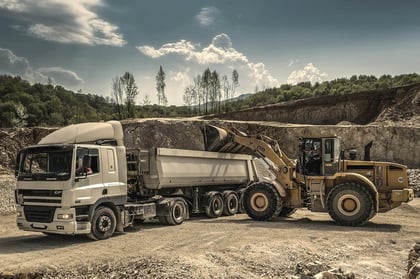How can restaurants help to combat climate change? The hospitality industry's response to climate change.
Sustainability is defined as planning for the long term, with emphasis on balancing environmental, economic, and social demands. Tourism activity accounts for 8% of global greenhouse gas emissions around the world and reducing food waste across the globe would help curb emissions of planet-warming gases, lessening some of the impacts of climate change.

The hospitality industry is a major contributor to global warming, and the industry will face potentially devastating consequences if climate change continues as projected. It is very apparent that the industry as a whole is currently falling well short of addressing climate change and their role as a significant contributor to it.
The reason why tourism contributes so much to climate change is because of the transportation industry; it's responsible for the majority of tourism's carbon dioxide (CO2) emissions, which are the most detrimental type of greenhouse gas.
The energy that goes into the production, harvesting, transporting, and packaging of that wasted food, meanwhile, generates more than 3.3 billion metric tons of carbon dioxide. While some are making efforts, they are fragmented and remain unenforced. It is therefore incumbent upon the international hotel industry community to develop and incorporate an industry-wide, enforceable system to deal with global warming. It is time for individual brand-holders, and independent property owners and operators to take a strong look at their facilities and to initiate steps to reduce their carbon footprints simply because it is the right thing to do.
 What are hospitality corporations doing in their attempt to reduce their contribution to global warming and climate change? Who within the industry is responsible for implementing the conversion to green or sustainable hospitality facilities? The intent is to attempt to reduce energy and water consumption, reduce carbon footprint, improve guest health and comfort, reduce operating and maintenance costs, and to raise guest awareness of sustainable development. Mandated initiatives within the industry must be put into place to ensure that a carbon-neutral, sustainable hospitality industry can continue to meet the needs of the customers.
What are hospitality corporations doing in their attempt to reduce their contribution to global warming and climate change? Who within the industry is responsible for implementing the conversion to green or sustainable hospitality facilities? The intent is to attempt to reduce energy and water consumption, reduce carbon footprint, improve guest health and comfort, reduce operating and maintenance costs, and to raise guest awareness of sustainable development. Mandated initiatives within the industry must be put into place to ensure that a carbon-neutral, sustainable hospitality industry can continue to meet the needs of the customers.
There are three major areas of improvement for climate change, the first one of transportation has already been touched upon and can be fixed by sourcing food locally; the second would be the reduction of single-use plastics. All around the world, countries are starting to crack down on single-use plastics. Microbeads in toiletries are out, and we all know about the war on plastic straws. These aversions to unnecessary plastic waste aren't misguided; globally we humans use over 2 million plastic bags per minute. At the rate we're going, plastics could outnumber fish in our oceans in our lifetime.
The last and probably most significant area is food waste; if food waste were a country, it would be the world's third largest emitter of greenhouse gases, behind the U.S. and China. The share of food waste is expected to increase drastically if emerging economies like China and India adopt western food habits, including a shift to eating more meat. The food we eat accounts for anywhere between 15 and 50% of global climate emissions. Between 30 and 40% of food produced around the world is never consumed, because it is spoiled after harvest and during transportation, or thrown away by shops and consumers.
 As poorer countries develop and the world’s population grows, emissions associated with food waste could soar from 0.5 gigatonnes (GT) of carbon dioxide equivalent per year to between 1.9 and 2.5 GT annually by mid-century. It is widely argued that cutting food waste and distributing the world’s surplus food where it is needed could help tackle hunger in places that do not have enough - especially given that land to expand farming is limited.
As poorer countries develop and the world’s population grows, emissions associated with food waste could soar from 0.5 gigatonnes (GT) of carbon dioxide equivalent per year to between 1.9 and 2.5 GT annually by mid-century. It is widely argued that cutting food waste and distributing the world’s surplus food where it is needed could help tackle hunger in places that do not have enough - especially given that land to expand farming is limited.
We tend to take our food for granted in the developed world. Since food is so plentiful, we aren't aware of the tremendous amount that's wasted and the impact that has on world hunger, political stability, the environment, and climate change. Yet, when it comes to looking for ways to curb greenhouse gas emissions, food wastage is a relatively easy fix, especially the low-hanging fruit—and it is literally rotting on our tables. It doesn't require any new technology, just more efficient use of what we already have.
Please remember ‘The best way to combat carbon emissions is to lessen them’. #DanielAyton @chefbytesdaniel
Want to learn more? Check out 6 Steps To Increase Your Restaurant Sustainability
.png?width=1571&height=766&name=CFD%20knife%20and%20fork%20logo%20(carbonfriendlydining.org).png)




